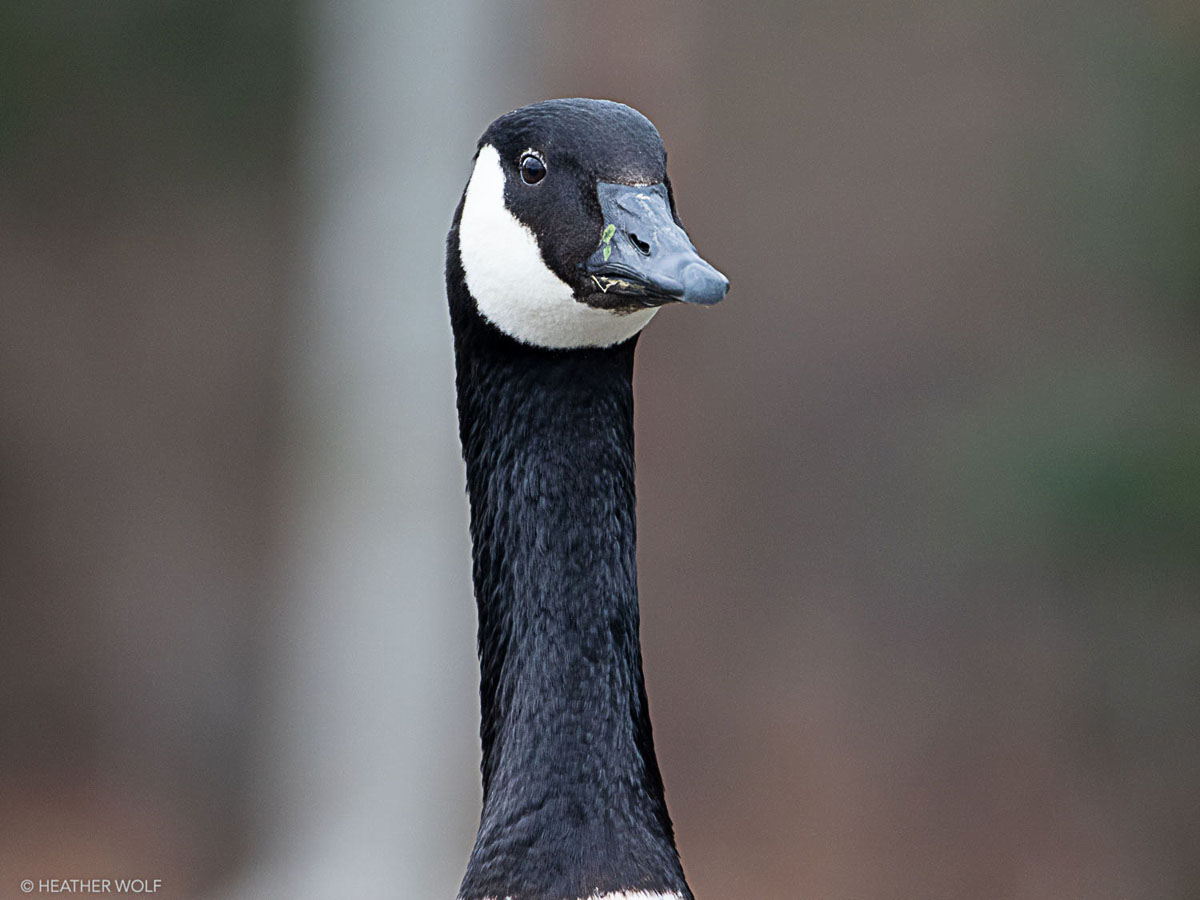Brooklyn Bird Watch: March 31
Canada Goose. Scientific Name: Branta canadensis

Today Brooklyn Bird Watch features a close-up, portrait style photo of the Canada Goose (sometimes called the Canadian Goose) by Heather Wolf. Known for their V-shaped formation and loud familiar honking sound during migration flights, these large long-necked birds have a complex relationship history with humans. While they are admired, they are also feared (if you get too close to a nest), and legitimately criticized as a nuisance sometimes.
As the National Audubon Society explains, “This big ‘Honker’ is among our best-known waterfowl. In many regions, flights of Canada Geese passing over — northbound in spring, southbound in fall — are universally recognized as signs of the changing seasons. Once considered a symbol of wilderness, this goose has adapted well to civilization, nesting around park ponds and golf courses; in a few places, it has even become something of a nuisance.”
One nuisance situation is because of these birds’ historical adaptation to grass lands. With the proliferation of lawns in suburban areas, in conjunction with the parks and golf courses, over time Canadian Geese have decided to stay around in urban areas where people consider them pests, meaning of course, people naturally would rather admire them from a comfortable distance, than share a landscape with them where bird feces, aggression, or noise can become a problem.

Brooklyn Boro
View MoreNew York City’s most populous borough, Brooklyn, is home to nearly 2.6 million residents. If Brooklyn were an independent city it would be the fourth largest city in the United States. While Brooklyn has become the epitome of ‘cool and hip’ in recent years, for those that were born here, raised families here and improved communities over the years, Brooklyn has never been ‘uncool’.